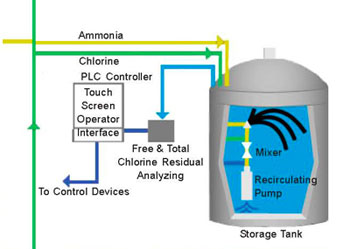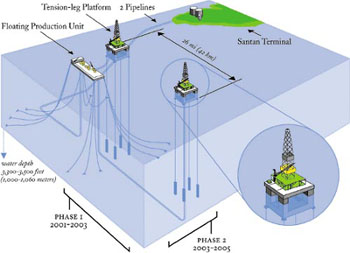Studies
East Pyramids Oil & Gas Technical Solutions
- Reservoir Management Study
- Integrated Field Management
- Integrated Reservoir Studies
- Reserves Evaluation Study
- Field Development Plan
- Reservoir simulation
Reservoir Management Study

Purpose of the study:
Optimize oil, water and gas production to maintain the reservoir pressure and improve oil production.
Summary
The principles of sound reservoir management are implemented with emphasis on practical applications.
An interdisciplinary synergistic approach to efficiently manage the reservoir is detailed with the goal of optimum profitability.
The significance of each component of the study and importance of timing and cost/benefit analysis are executed and checked between different subsurface disciplines.
Reservoir management models for optimum field development plans and field operating plans are analyzed. The interdisciplinary reservoir management approach shows how each technology contributes to the plan and how QAQC and balances are developed.
Integrated Field Management

Purpose of the study:
Increased oil production and lowered lifting cost in mature fields
Summary
GENCE & EPTS have a good experience in implementing such study. The study will include four main steps:
1. Reservoir performance analysis:
This study will be performed to understand the driving mechanism of the reservoir and the potential areas/zones that might respond to work-over positively. This will be achieved either by applying simple material balance using material balance software for the reservoir or by applying EPQS process to the full field “add link. The main objective of this study is to check the deliverability and reserves of the reservoir.
2. Artificial lift analysis:
This will be done by constructing A/L models using the client preferred software for producing wells to understand the performance efficiency of these wells. This will be achieved by modelling the lift performance for the current oil producers. The main objective of this study is to diagnose the well performance problems and propose solutions. The deliverables for this study will be clear recommendations to the operations department to perform successful work-over to the wells and produce with better and economic oil rates.
3. Surface facility analysis:
This will be done by constructing surface network model for the surface facilities in the field. The model will propose if there are any bottle necks in the surface system.
4. Apply Integrated Production Modeling Approach:
The previous models will be integrated together to better understand the full system. The integrated system will be optimized to get the maximum oil production from the system, in addition clear recommendations will be advised to which part of the system is better to be intervened.
Integrated Reservoir Studies

Purpose of the study:
Locate Bypassed and Untapped Oil Describe Current Reservoir Conditions Predict Reservoir Performance Under Different Development Scenarios
Summary
Phase-I Static Models Construction
1. Seismic Interpretation/Review:EPTS team will either interpret or review the available interpretation according to highest standard, then decision will be taken to come up with the most realistic interpretation cases to represent the different reservoirs in the field. The team will also determine the uncertainties associated to these interpretations. If multiple scenarios need to be considered, then the team will construct them if needed.
2. Petrophysical Interpretation/Review:
EPTS team will start applying it’s QC process for the open/cased-hole log data available and will come up with decision for the best method for interpreting such data. The most realistic results will be integrated with EPTS team and if necessary different set of reservoir properties will be considered for the full field static model. The team will also determine the amount of uncertainties associated to these interpretations.
3. Geological Interpretation/Review:
EPTS team will start applying it’s QC process for the available geological data. Well correlation panels will be constructed then integrated with the team. The most realistic correlation will be considered to build the structural model. This model will be validated by the engineering team in the following phases of the study.
4. Sedimentlogical Interpretation/Review:
EPTS team will check the general geological setting and review main depositional setting for the studied reservoir to come up with the best models to represent the distribution of different facies in the model. This distribution will be validated against the available core, logs, pressure, and production data.
5. Static Model Construction:
EPTS team will construct the static model by integrating the previous studies to construct both the structural and the property model using commercial available software in the industry.
Phase-II Dynamic Model Construction
6. Conventional Engineering Analysis:EPTS team usually applies the conventional reservoir engineering concepts before start building the dynamic model. The objective of this study is to better understand the reservoir and to prepare the data for the simulation phase.
7. Up-scaling:
EPTS team usually applies the conventional reservoir engineering concepts before start building the dynamic model. The objective of this study is to better understand the reservoir and to prepare the data for the simulation phase.
8. History Matching:
EPTS team will apply the most updated technology during the history match task of the study. All the team will work together trying to understand the reasons and the main parameters that affect the history match quality. If there will be a need to visit any of the previous tasks, the team will re-visit then apply this update and re-do all necessary work to update the dynamic model such as smooth and valid history match will be obtained at end of this task.
9. Reservoir Performance Prediction:
Based on the objectives of the study EPTS team will perform all types of prediction scenarios for the field such as:
- Predict field performance with no actions taken.
- Predict field performance based on applying work-over campign.
- Predict field performance based on addition infill wells.
- Predict reservoir behavior with different drive mechanisms.
10. Economic Study:
Based on the prediction performance, the economic parameters and conditions that can be given to EPTS, Economic study will be performed so that the decision tree will be easy to be constructed.
Field Development PlanStudies

Purpose of the study:
Construct field development plan for multiple development scenarios
Summary
Phase-I Static Models Construction
1. Seismic Interpretation/Review:EPTS team will either interpret or review the available interpretation according to highest standard, then decision will be taken to come up with the most realistic interpretation cases to represent the different reservoirs in the field. The team will also determine the uncertainties associated to these interpretations. If multiple scenarios need to be considered, then the team will construct them if needed.
2. Petrophysical Interpretation/Review:
EPTS team will start applying it’s QC process for the open/cased-hole log data available and will come up with decision for the best method for interpreting such data. The most realistic results will be integrated with EPTS team and if necessary different set of reservoir properties will be considered for the full field static model. The team will also determine the amount of uncertainties associated to these interpretations.
3. Geological Interpretation/Review:
EPTS team will start applying it’s QC process for the available geological data. Well correlation panels will be constructed then integrated with the team. The most realistic correlation will be considered to build the structural model. This model will be validated by the engineering team in the following phases of the study.
4. Sedimentlogical Interpretation/Review:
EPTS team will check the general geological setting and review main depositional setting for the studied reservoir to come up with the best models to represent the distribution of different facies in the model. This distribution will be validated against the available core, logs, pressure, and production data.
5. Static Model Construction:
EPTS team will construct the static model by integrating the previous studies to construct both the structural and the property model using commercial available software in the industry.
Phase-II Dynamic Model Construction
6. Conventional Engineering Analysis:EPTS team usually applies the conventional reservoir engineering concepts before start building the dynamic model. The objective of this study is to better understand the reservoir and to prepare the data for the simulation phase.
7. Up-scaling:
EPTS team usually applies the conventional reservoir engineering concepts before start building the dynamic model. The objective of this study is to better understand the reservoir and to prepare the data for the simulation phase.
8. History Matching:
EPTS team will apply the most updated technology during the history match task of the study. All the team will work together trying to understand the reasons and the main parameters that affect the history match quality. If there will be a need to visit any of the previous tasks, the team will re-visit then apply this update and re-do all necessary work to update the dynamic model such as smooth and valid history match will be obtained at end of this task.
9. Reservoir Performance Prediction:
Based on the objectives of the study EPTS team will perform all types of prediction scenarios for the field such as:
- Predict field performance with no actions taken.
- Predict field performance based on applying work-over campign.
- Predict field performance based on addition infill wells.
- Predict reservoir behavior with different drive mechanisms.
10. Economic Study:
Based on the prediction performance, the economic parameters and conditions that can be given to EPTS, Economic study will be performed so that the decision tree will be easy to be constructed.
Phase-III Surface Facilities & Wells Design
1- Wells Design:EPTS team will consider different well type and different surface locations to drill the development wells. These options will be considered during the simulation study and in the following economic study. The team will support the client to take the optimum decisions.
2- Surface Facilities Design:
EPTS will consider third party to come up with proper design for the surface facilities as per the agreed development scenarios from phase-II of the study.
3-Economic Study:
Based on the prediction performance, the economic parameters and conditions that can be given to EPTS, Economic study will be performed so that the decision tree will be easy to be constructed.
Reservoir simulation

Purpose of the study:
Study development options such as natural depletion, water injection, and/or gas injection. Decide when to initiate a secondary recovery method to maximize oil recovery and select pattern type should be used. Select the appropriate type of EOR methods applied for an asset and what will be the EOR performance and its ultimate recovery? Investigate different well locations and spacing that will affect the ultimate recovery. Decide the critical data that have the most effect on recovery and, therefore, recommend proper actions.
Summary
- Construct dynamic model based on the available static model and apply EPTS checklist process.
- Build simulation grid that are consistent with the structural geology and flow directions
- Incorporate reservoir complex features
- Verify grid geometry/properties using EPTS QAQC process
- Perform detailed conventional RE studies to fine tune both the static and dynamic models.
- Faults
- PVT
- SCAL
- Perform EPTS history match technique
- Predict reservoir performance with different production scenarios
- Select the appropriate development option to maximize the ultimate recovery of the reservoir
- Perform economical feasibility study
Construct dynamic model and perform the following sensitivities:
Reserves Evaluation Study

Purpose of the study:
Calculate the original hydrocarbon in place using probabilistic approach. Define 1P, 2P and the 3P OIP cases. Estimate the ultimate reserves as 1P, 2P and 3P cases. The developed produced and non-produced reserves by applying material balance and advanced decline curve analysis. calculate the undeveloped reserves and propose developed plan to develop these reserves.
